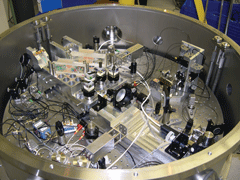Picometers, a unit of measurement equivalent to one trillionth of a meter, play a pivotal role in the realm of nanotechnology, materials science, and atomic physics. This minute scale exists on the fringe of the subatomic, allowing scientists to explore the intricate relationships that govern the behaviors of matter and energy. In essence, the picometer becomes a lens through which the very fabric of the universe can be scrutinized. This article delves into various phenomena measured in picometers, revealing the underlying complexities and the promises these insights hold for advancing both science and technology.
To begin, consider the atomic scale. Atoms constitute the fundamental building blocks of matter, composed of protons, neutrons, and electrons. The size of an atom is typically on the order of angstroms (10-10 meters), suggesting that measuring something at the picometer level allows for a resolution that is three orders of magnitude finer. This precision is critical in spectroscopy, where the interactions between electromagnetic radiation and atomic transitions are analyzed. For instance, in X-ray crystallography, the picometer measurements of bond lengths between atoms can lead to revelations about molecular structures and chemical properties that are essential in developing pharmaceuticals and catalysis.
Electrons, the subatomic particles with a profound influence over atomic and molecular interactions, are often measured at the picometer scale as well. The behavior of electrons around a nucleus defines chemical bonding, which in turn governs material properties. The electron cloud surrounding an atomic nucleus can fluctuate at picometer scales, and these dynamics are crucial in understanding quantum mechanics and the principles that underlie electromagnetic interactions. For instance, concepts such as electric fields and potential energy surfaces are intricately linked to the spatial distributions of electron densities that can be quantified in picometers.
Moving from atoms to chemical compounds, we encounter the need to understand intermolecular forces—namely, hydrogen bonds, Van der Waals forces, and ionic interactions. These forces can manifest at distances requiring picometer accuracy for an accurate description. Hydrogen bonding, pivotal in molecular biology, especially in the structure of DNA, operates on distances typically less than 3 picometers. Understanding these interactions is essential for elucidating biochemical processes, such as enzyme activity and protein folding. Thus, picometers not only lend insight into structural biology but also into the dynamic nature of macro-molecular structures.
The curiosity surrounding picometer precision extends to advances in material science as well. The nanoscale manipulation of materials often requires measurements with picometer resolution. Graphene and carbon nanotubes, for example, exhibit extraordinary mechanical, thermal, and electrical properties which are inherently tied to atomic-scale features. The exploration of these qualities often involves assessing bond lengths and angles with picometer accuracy to unlock their potential for applications in electronics, energy storage, and nanomedicine. As engineers strive to incorporate such materials into larger systems, the significance of measuring interactions and imperfections at the picometer level becomes evident.
Moreover, the relevance of picometers is not confined to static measurements; rather, these scales become increasingly meaningful when considering the effects of temperature and pressure at the nanoscale. The phenomena of thermal expansion or contraction in materials can reveal essential information when analyzed at picometer precision. For instance, at elevated temperatures, atomic vibrations can yield displacement patterns that vary in picometer scales, thereby affecting mechanical properties. This correlation between thermal dynamics and structural integrity becomes vital for the design of advanced materials, particularly those used in harsh environmental conditions.
Notably, the burgeoning field of quantum computing has prompted further investigations into picometer-scale measurements. Quantum bits or qubits are the fundamental units of information in quantum computing systems, often involving interactions between subatomic particles. Understanding these quantum states necessitates sophisticated measurement techniques that operate at the picometer level to analyze coherence times and transition probabilities. A shift in perspective is required here, as researchers traverse the boundaries of classical physics and explore the probabilistic nature of quantum mechanics. The implications of these developments promise to revolutionize computational speed and capability, showcasing the transformative power of picometer-scale insights.
In the realm of advanced imaging techniques, such as atomic force microscopy (AFM) and scanning tunneling microscopy (STM), picometers play an indispensable role. These methodologies allow scientists to visualize surfaces at the atomic level, producing images where features are defined with unparalleled precision. Such imaging capabilities facilitate not only the study of individual atoms but also the examination of nanoscale phenomena such as surface defects and nanoparticle interactions. With these technologies, the real-time observation of dynamic processes at picometer scales opens new avenues for innovation in various scientific disciplines.
In conclusion, the measurement of physical quantities in picometers extends our understanding from the atomic to the macroscopic realms. By providing a clearer image of atomic behavior, chemical interactions, material properties, and quantum phenomena, picometers offer insights that hold the promise of transforming numerous industries. As scientists continue to push the boundaries of measurement capabilities, we can anticipate a future where the knowledge gained at these infinitesimal scales leads to groundbreaking advancements in technology, materials science, and medicine. The journey through the world of picometer measurements not only fascinates but also prompts us to reconsider our conventional understanding of matter and the universe itself.












